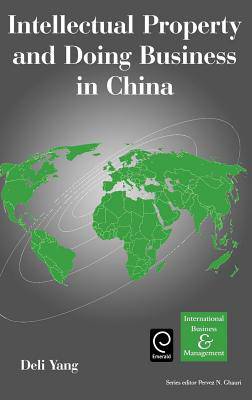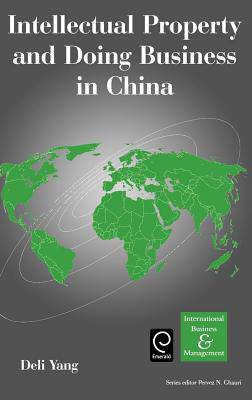
- Afhalen na 1 uur in een winkel met voorraad
- Gratis thuislevering in België vanaf € 30
- Ruim aanbod met 7 miljoen producten
- Afhalen na 1 uur in een winkel met voorraad
- Gratis thuislevering in België vanaf € 30
- Ruim aanbod met 7 miljoen producten
Zoeken
Omschrijving
An intellectual property (IP) system was established in China in 1985. Since then, the merits and drawbacks of the system have become apparent in theory and practice. Despite the fact that a great deal has been written about the Chinese IP system, systematic studies of the subject are still scarce, especially from a corporate management perspective. The book has three aims. It evaluates the problems UK and US multinational enterprises have encountered in their IP Flows into different enterprises in China. It also analyses the causes of these problems and suggests methods of avoiding future problems. The overall rationale for the book is to fill a void in our understanding of IP rights in China, particularly from a corporate perspective. It is important to draw upon a variety of discipline approaches when exploring these issues, which are influenced by the political context, the legislative framework, economic factors and the existence of cultural differences. The book is composed of ten chapters containing studies of related IP history, previous study on the area, and the current empirical survey. Major findings are discussed in later chapters of the book. In the conclusions, the book provides eleven suggestions for future practice for companies involved with IP flows.
Specificaties
Betrokkenen
- Auteur(s):
- Uitgeverij:
Inhoud
- Aantal bladzijden:
- 320
- Taal:
- Engels
- Reeks:
- Reeksnummer:
- nr. 11
Eigenschappen
- Productcode (EAN):
- 9780080441382
- Verschijningsdatum:
- 29/05/2003
- Uitvoering:
- Hardcover
- Formaat:
- Genaaid
- Afmetingen:
- 172 mm x 231 mm
- Gewicht:
- 594 g

Alleen bij Standaard Boekhandel
+ 496 punten op je klantenkaart van Standaard Boekhandel
Beoordelingen
We publiceren alleen reviews die voldoen aan de voorwaarden voor reviews. Bekijk onze voorwaarden voor reviews.











